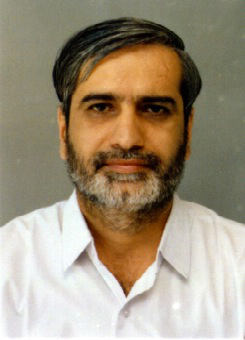 First the official factsheet on Indian Textiles (Source: Textiles India 2017 to be held in June in Gandhinagar). Fibre: 2nd largest fibre producer in the world (9 mn tonnes of fibre production in 2015-16); 2nd largest producing in silk and MMF; One of the major producers of wool. Yarn: 2nd largest installed spindle and rotor capacity in the world with more than 52 mn spindles and approx. 8,70,000 routers; Spun yarn production approx. 5700 mn kg in 2015-16; Filament year production approx. 1200 mn kg in 2015-16. Fabric: Biggest installed weaving capacity in the world with more than 4.9 mn looms including 2.4 mn handlooms; Fabric production approx. 66 bn sq. meters in 2015-16; Diverse fabric mix with focus on cotton based products. Apparel: Garment production for exports estimated at 3400 mn pieces annually and for domestic market at 5600 mn pieces annually; 12.9 mn workers employed out of which 70% are women.
First the official factsheet on Indian Textiles (Source: Textiles India 2017 to be held in June in Gandhinagar). Fibre: 2nd largest fibre producer in the world (9 mn tonnes of fibre production in 2015-16); 2nd largest producing in silk and MMF; One of the major producers of wool. Yarn: 2nd largest installed spindle and rotor capacity in the world with more than 52 mn spindles and approx. 8,70,000 routers; Spun yarn production approx. 5700 mn kg in 2015-16; Filament year production approx. 1200 mn kg in 2015-16. Fabric: Biggest installed weaving capacity in the world with more than 4.9 mn looms including 2.4 mn handlooms; Fabric production approx. 66 bn sq. meters in 2015-16; Diverse fabric mix with focus on cotton based products. Apparel: Garment production for exports estimated at 3400 mn pieces annually and for domestic market at 5600 mn pieces annually; 12.9 mn workers employed out of which 70% are women.
Despite having the strength across the entire value chain from natural to man-made fiber to apparel to home furnishings, India’s share of global exports is just around 5% as against China’s 39%. Vietnam and Bangladesh have been successful in consistently achieving a remarkable peak export growth rate of 30% and 18% respectively. India’s Vision 2024-25 document has a very ambitious target of increasing the global market share in textile and apparel trade from the present level of 5% to 15-20%. The Vision considers a growth rate of 15% CAGR over this period as ‘feasible’ for India to achieve resulting in exports of textile and apparel of about US$ 185 billion by 2024-25. Similarly, the size of the domestic market is set to touch US$ 350 billion by 2024-25 from the current level of about US$ 100 billion considering 12% CAGR. The Vision envisages focusing on accelerating the exports of value-added apparel, homes furnishings, technical textiles and other finished products instead of exporting raw materials like fibre and yarn.
The EU and the US alone account for India’s 50% share of the total textile & apparel exports. India cannot attain the Vision targets if it doesn’t look beyond traditional products and markets. It is crucial to acquire the necessary knowledge and expertise in terms of new products, quality compliance as well as to work out appropriate marketing and technical strategies specific to those markets. India will have to look at countries like Japan, China, Brazil, Russia, etc. A good beginning has been made to tap the immense Japanese market. The apparel import market in Japan is highly fragmented. Japan imports apparel from more than 100 countries worldwide mostly from Asian countries. China is the largest exporter to Japan, followed by Vietnam and Indonesia. These three countries accounted for 86% of Japan apparel imports in 2015. According to data available, Japan imports 97%of its textiles requirements out of which China supplies 65-70% while Bangladesh caters to 7% of Japanese imports.
India’s share in Japan’s total textiles imports of $38bn in 2016 was not even 1%. Japan offers huge potential if India upgrades & matches the technical comliance. Japan’s imports are more than India’s total textiles exports of $35 bn. Japanese buyers are very much quality conscious and want the products to be approved by the Japan Textile Products Quality and Technology Centre (QTEC). Some of their standards are different from those accepted in the western markets. An MoU was signed last year between the Textiles Committee and QTEC to establish and encourage both the quality compliance activities jointly and to organize collaborative capacity building programs in textiles. QTEC will help in evaluating & upgrading the testing facilities at Textiles Committee’s 19 laboratories in the country so that they can meet the requirements of the Japanese market. If this partnership becomes successful, then India can expect a breakthrough in the Japanese market where the consumption pattern has gradually shifted to the fast fashion brands with affordable price.
G.D. JASUJA
Managing Editor





